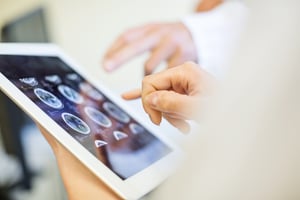The medical industry is driven by patient needs, government oversight, and insurance coverage. This industry is growing quickly, but changing even quicker.
Two emerging trends in the medical industry are the increase of single-use devices and real-time patient monitoring. Over the next five years, we anticipate seeing these trends continue to grow - but five years is a long time!
A Predicted Push Towards Single-Use Devices
As medical device designs become more complex, high-level disinfection and sterilization become more complicated. The FDA has acknowledged that certain attributes make medical devices difficult to reprocess, including:
When devices are not properly reprocessed, patient safety is comprised. Using a contaminated device is one way that hospital-acquired infections (HAIs) are transmitted.
HAIs affect the reputations of healthcare facilities and their finances. Facilities that are performing poorly due to certain HAIs lose Medicare funding. Put simply, single-use devices reduce the risk of HAIs.
In addition, the sterile processing departments at many hospitals are understaffed. Single-use devices relieve some of the workflow from these burdened departments.

According to the American Diabetes Association, just over 30 million people have diabetes. This accounts for a little over 9% of the population. Medicare now covers continuous glucose monitors (CGMs) for people with diabetes who meet certain criteria. CGMs eliminate the need for blood sugar checks throughout the day. Patients are notified immediately of potentially dangerous blood sugar spikes or dips. Patients experience a greater quality of life by not having to stop their activities to check their blood sugar throughout the day.
There are wearable devices that can measure up to eight vital signs in real-time, including heart rate, skin temperature, fall detection, and respiratory rate. These devices are wireless, can weigh only 11 grams, and have been cleared by the FDA for both home and hospital use. At night, patients can rest without being woken up for periodic vital checks. During the day, they can resume normal activities without interruption.
Remote monitoring and real-time monitoring are cost-effective because they catch irregular readings before they turn into emergencies. Costly interventions may be avoided, making these monitoring devices appealing to insurance companies.
https://www.mpo-mag.com/contents/view_online-exclusives/2018-08-22/5-real-time-remote-patient-monitoring-trends/7970
https://www.beckershospitalreview.com/quality/sterile-processing-how-hospitals-can-maintain-patient-safety-amid-an-ever-changing-field.html